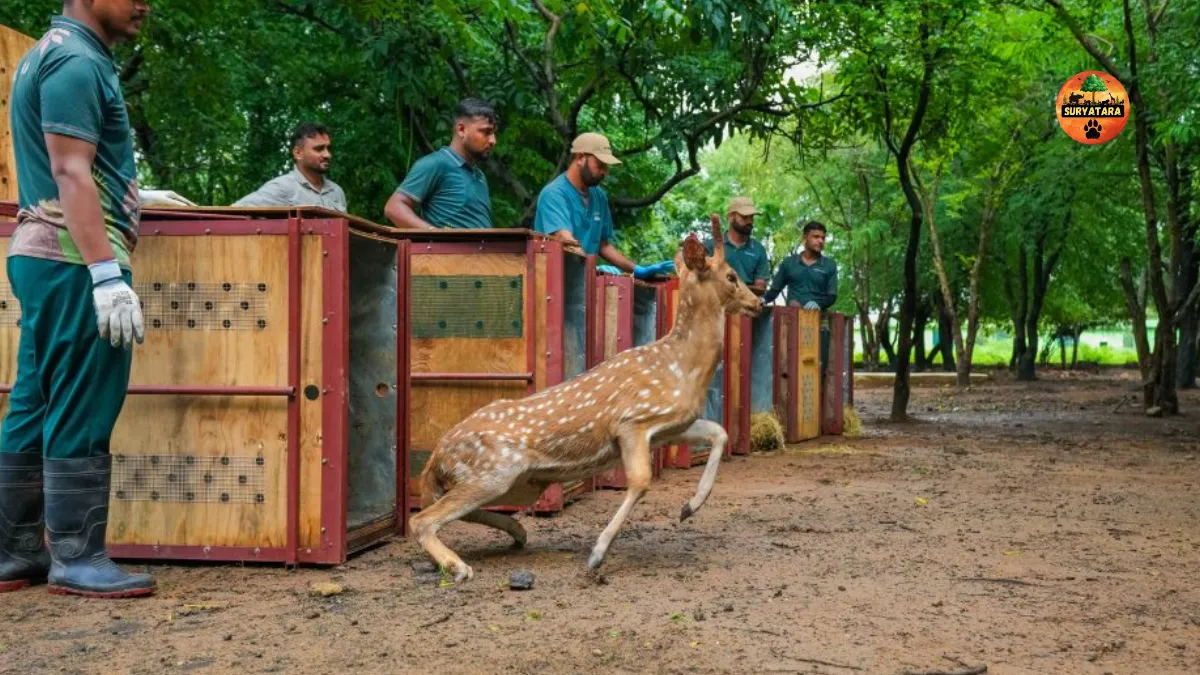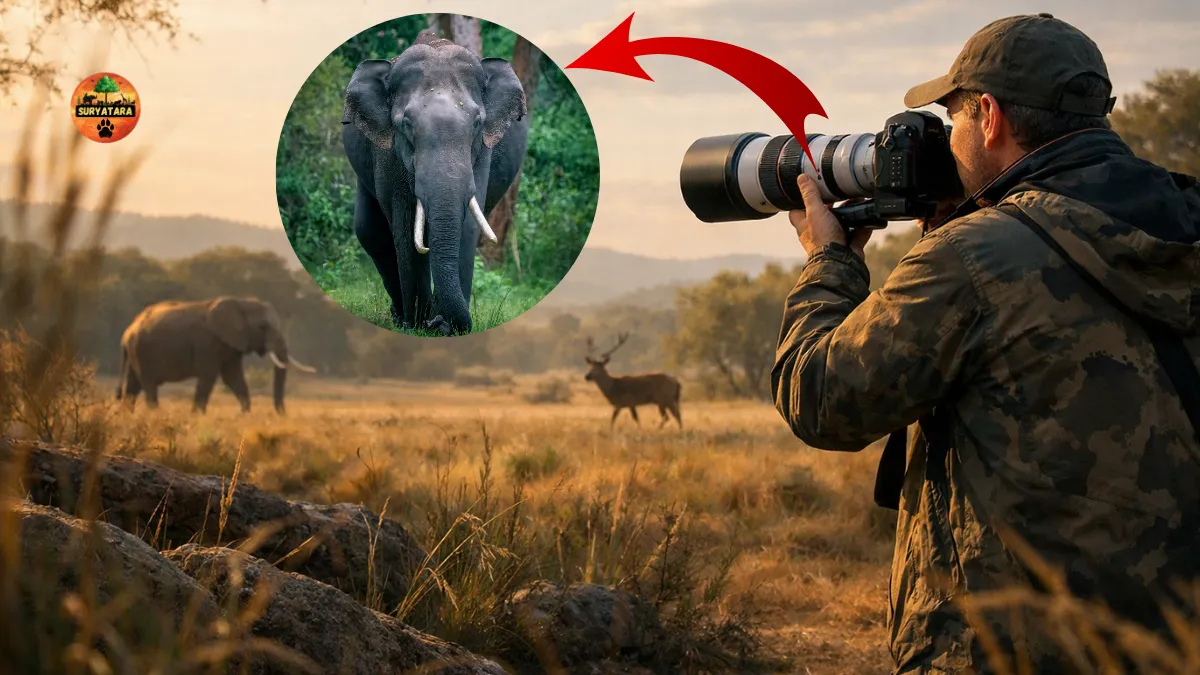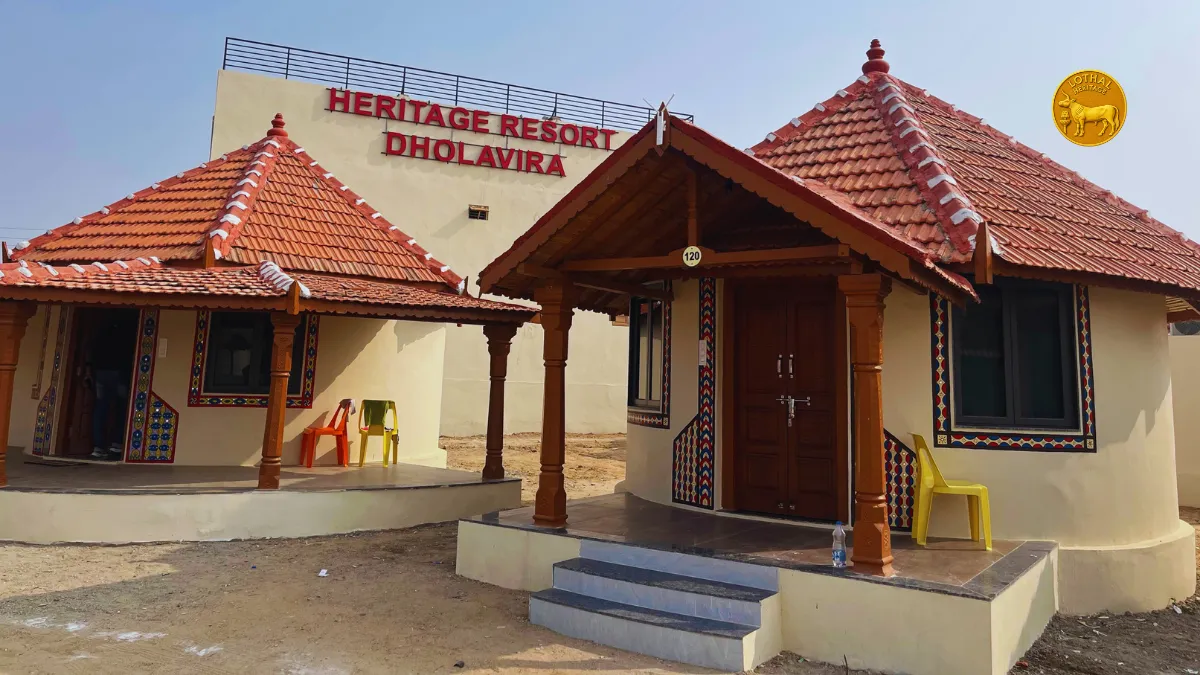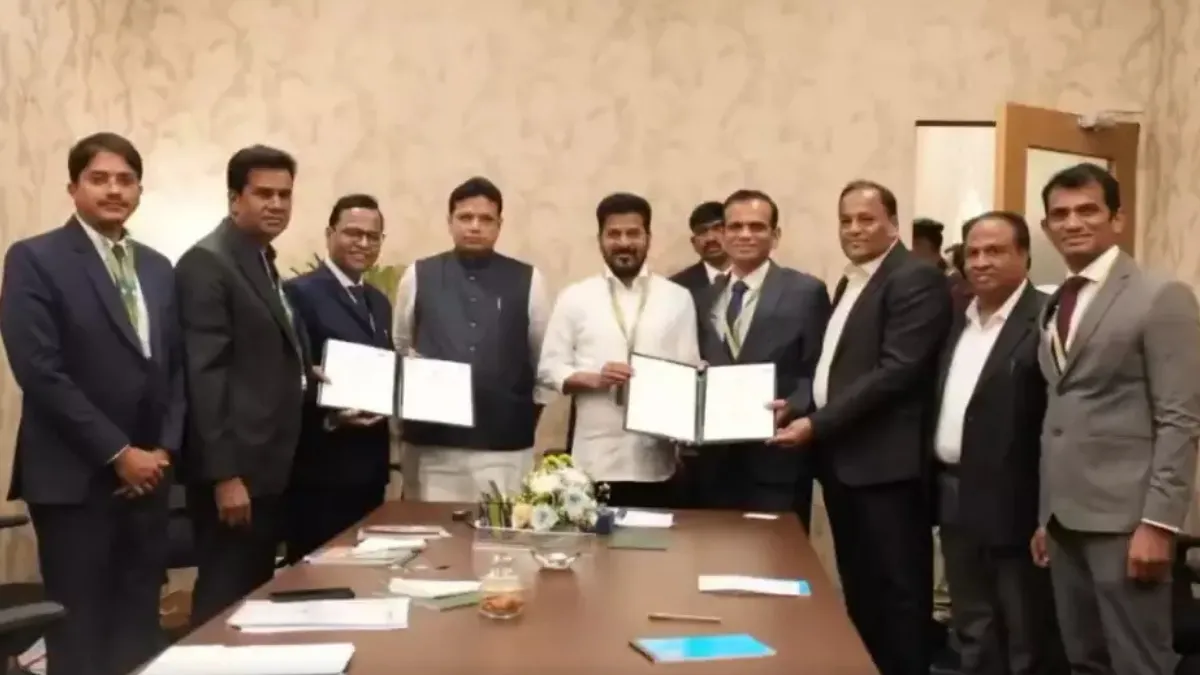Introduction
Vantara Wildlife conservation in India has always been a topic of global significance. With its diverse ecosystems, India is home to countless species that rely on human-driven initiatives to survive in the modern world. In a historic move, the Gujarat Forest Department has partnered with Vantara, a pioneering wildlife rescue and conservation initiative founded by Anant Ambani, to reintroduce 33 spotted deer (Axis axis), commonly known as chital, into the Barda Wildlife Sanctuary.
This initiative is more than just a reintroduction of animals—it is a step toward ecological restoration, biodiversity enhancement, and the establishment of a model for future conservation projects in India.
The Landmark Initiative: Reintroduction of Spotted Deer
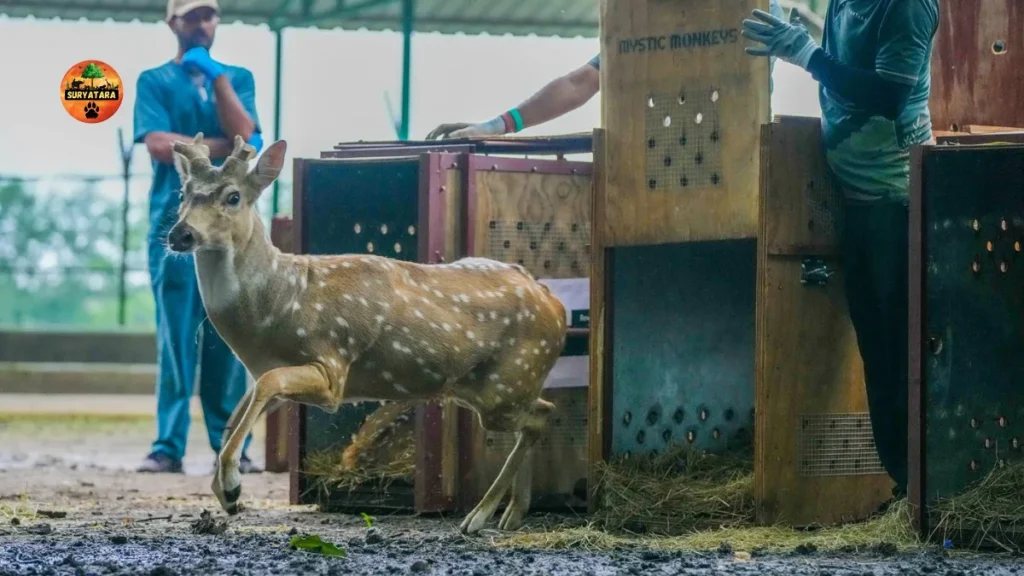
The translocation involved moving spotted deer from Vantara’s ex-situ conservation facility in Jamnagar to the Barda Wildlife Sanctuary. These deer were transported in specially designed ambulances to ensure their safety and comfort during the journey.
Once inside the sanctuary, the Forest Department conducted checks to confirm ecological suitability and the readiness of support systems. After these assessments, the deer were released under expert supervision.
Vantara provided vital technical and logistical support, ensuring that the entire operation complied with established global conservation protocols.
Expert Insights: Why This Matters
Dr. Brij Kishor Gupta, Director of the Greens Zoological, Rescue and Rehabilitation Centre, highlighted the importance of this initiative:
“This marks a pivotal step in restoring and enriching the biodiversity of Barda Wildlife Sanctuary. Spotted deer have historically inhabited this landscape, and their scientifically guided reintroduction is not only ecologically significant but also emblematic of a broader vision for habitat revitalization.”
Dr. Gupta also emphasized that this move reflects the Gujarat Forest Department’s commitment to in-situ conservation frameworks, backed by ecological assessments, species recovery planning, and inter-agency collaboration.
About Barda Wildlife Sanctuary
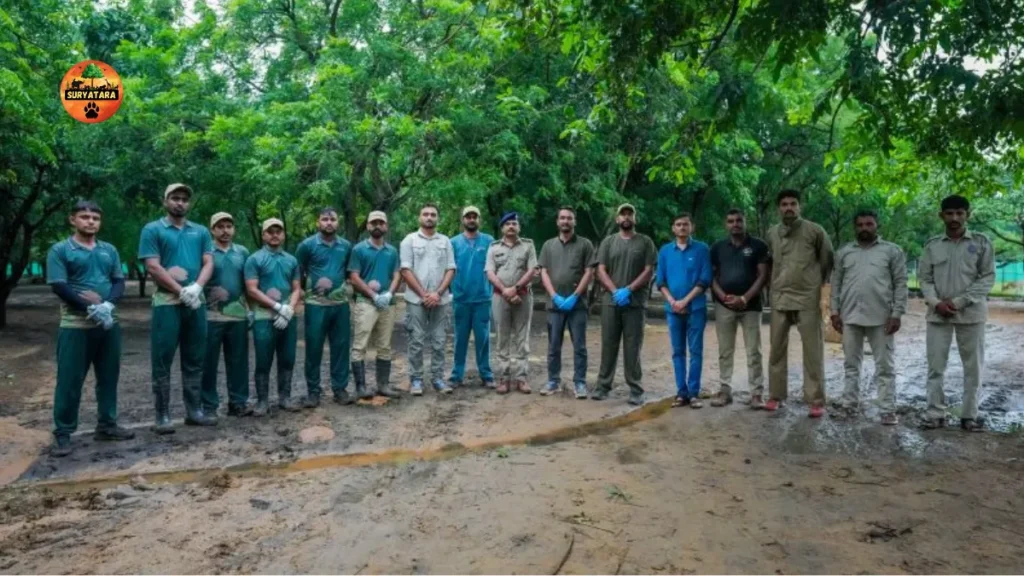
Barda Wildlife Sanctuary, located in Porbandar district of Gujarat, covers 192.31 square kilometers and is celebrated for its biological richness. The sanctuary provides a natural mosaic of habitats, including:
- Grasslands
- Scrub forests
- Dry deciduous forests
- Riverine zones
This diverse ecosystem makes Barda a refuge for a wide variety of species.
Wildlife in Barda
- Apex and mesopredators: Leopards, hyenas, wolves, jackals
- Herbivores: Blue bulls (nilgai), wild boars, and now, reintroduced spotted deer
- Birdlife: Rare raptors such as the spotted eagle and crested hawk-eagle, alongside several forest-dependent birds
Historically, the sanctuary was home to thriving populations of sambar, chital, and chinkara, but habitat loss and ecological pressures caused significant decline. This reintroduction seeks to reverse that trend.
The Ecological Importance of Spotted Deer
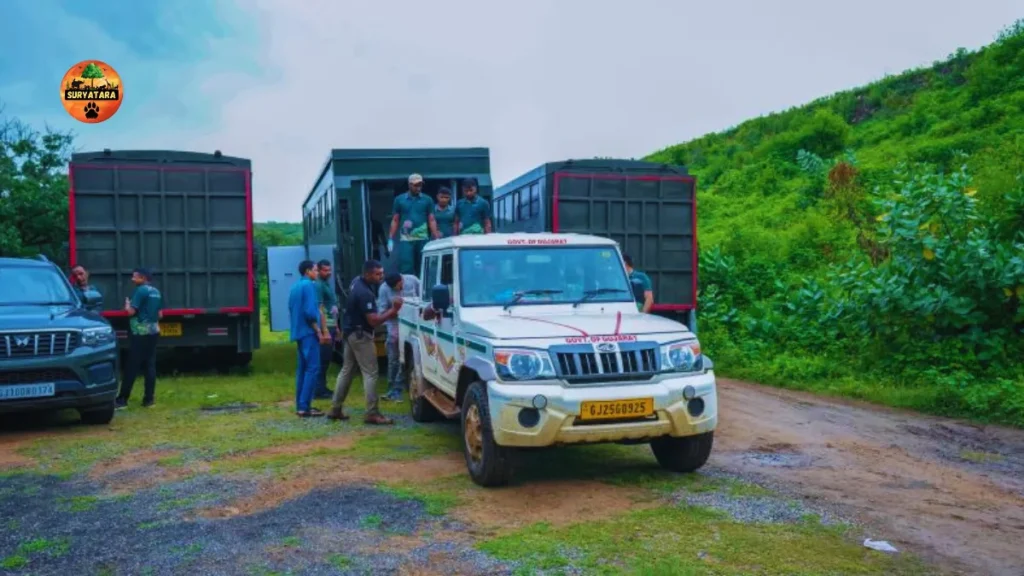
Spotted deer are not just another herbivore species—they play a crucial ecological role:
- Restoring Trophic Balance: By reintroducing chital, the food chain gets balanced, supporting predators like leopards and hyenas.
- Seed Dispersal: As grazers, deer help in spreading seeds, ensuring plant diversity.
- Ecosystem Health: Their grazing prevents overgrowth, maintaining open forest patches for other species.
By reviving the chital population, Barda’s ecosystem regains a missing link vital for long-term sustainability.
Vantara’s Role in Conservation
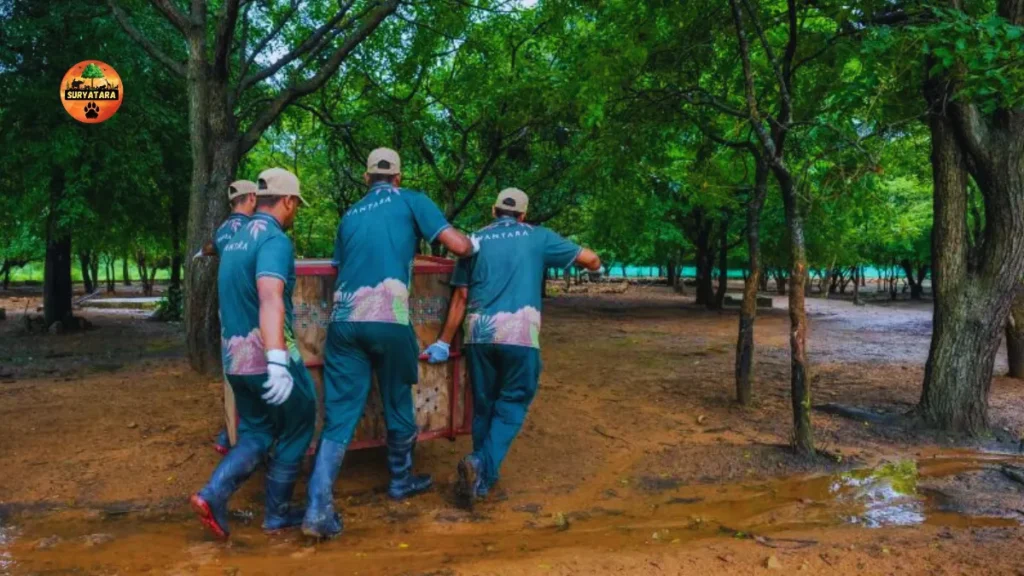
Founded by Anant Ambani, Vantara has rapidly become a cornerstone of wildlife conservation in India. Its Greens Zoological, Rescue and Rehabilitation Centre in Jamnagar is among the largest and most advanced facilities in Asia.
Key contributions of Vantara to this initiative include:
- Ex-situ Conservation Expertise: Breeding and caring for species outside their natural habitat.
- Veterinary Care: Advanced medical support for rescued and translocated animals.
- Technical Infrastructure: Specialized ambulances and holding enclosures.
- Scientific Research: Monitoring health, genetics, and adaptation of species.
This partnership with the Gujarat Forest Department demonstrates how public-private collaboration can accelerate wildlife conservation efforts in India.
Gujarat’s Strong Commitment to Wildlife
The Government of Gujarat has consistently shown leadership in conservation, from protecting Asiatic lions in Gir National Park to reviving habitats like Barda.
Key strategies include:
- Conducting ecological carrying capacity studies before reintroductions
- Strengthening anti-poaching measures
- Promoting community involvement to reduce man-animal conflict
- Expanding eco-tourism in sustainable ways
This reintroduction project is yet another example of Gujarat setting benchmarks for other states to follow.
The Broader Vision: India’s Conservation Goals
India has pledged under international agreements to restore biodiversity and protect endangered species. Projects like this align with:
- National Biodiversity Action Plan (NBAP)
- Convention on Biological Diversity (CBD)
- UN Decade on Ecosystem Restoration
By focusing on both in-situ (on-site) and ex-situ (off-site) conservation, India is creating a hybrid model that ensures the survival of key species while preparing ecosystems for long-term resilience.
Community Impact and Eco-Tourism Potential
The reintroduction of spotted deer is not only beneficial to wildlife but also to local communities:
- Tourism Growth: A richer ecosystem attracts wildlife enthusiasts, boosting eco-tourism in Porbandar district.
- Employment Opportunities: Local people can benefit from jobs in guiding, eco-lodges, and forest services.
- Awareness and Education: Conservation projects inspire communities to value and protect their natural heritage.
When communities see tangible benefits, conservation transforms from a government project into a shared mission.
Also read: Anant Ambani Honoured with Global Humane Society’s Animal Welfare Award for Vantara Vision
A Model for Future Projects
The successful collaboration between Vantara and Gujarat Forest Department proves that combining government support with private expertise can produce impactful results. This project sets a national benchmark for:
- Reintroducing locally extinct species
- Strengthening habitats through science-led planning
- Creating replicable conservation models across India
It paves the way for similar initiatives in other sanctuaries where species decline has disrupted ecosystems.
Also read: Vantara Hosts Flagship Veterinary Training on Conservation Medicine in Jamnagar
Conclusion
The release of 33 spotted deer into Barda Wildlife Sanctuary is more than just a symbolic act. It is a strategic conservation milestone that demonstrates how partnerships between institutions like Vantara and government agencies can transform landscapes.
By restoring herbivore populations, supporting predators, and enriching biodiversity, this initiative not only revives the ecological health of Barda but also sets new standards for wildlife conservation in India.
As India continues its journey toward becoming a global leader in conservation, efforts like these highlight the power of collaboration, science, and community involvement in safeguarding our shared natural heritage.
